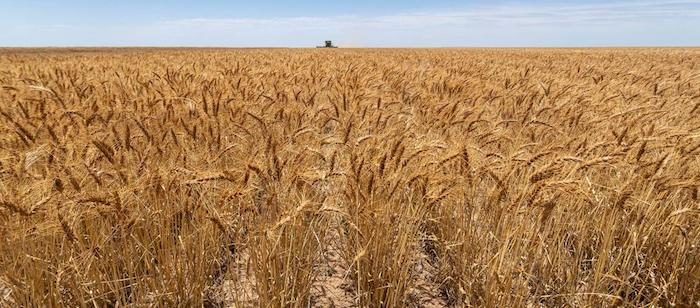By: Alisa Boswell-Gore
On the western side of Oklahoma, early cotton acre establishment is in question, and winter wheat outcome looks devastating, according to Gary Strickland, Jackson County director and southwest regional agronomist for Oklahoma State University Extension.
With winter wheat crops being harvested as of last week, OSU Extension experts predict a nearly 50% decline in wheat yields on the western side of the state.
Strickland said about half of the wheat fields in his local area have been abandoned by producers.
“They have either turned cattle out on them or have abandoned them because they can’t get any use out of them,” Strickland said. “We’re in pretty bad shape. It’s not that we’re becoming dry; it’s that we’re dry deep into the soil profile right now.”
Strickland said when setting up 4-H land judging pits in the southwest region, there was no moisture 3 feet deep in the soil.
“When you look at the total rainfall, it looks like Jackson County had adequate rainfall, but the problem is it took 26 rainfalls for us to get approximately 5 inches,” Strickland said, adding that their largest rainfalls in 2022 have been from one-half to three-quarters of an inch.
“In these drought conditions, these are not effective crop production rainfalls,” Strickland said.
According to USDA's National Agricultural Statistics Service reports, abandonment for winter wheat in the U.S. is the highest since 2002 with the highest levels in Texas and Oklahoma. The USDA Crop Production Report for May estimated 60 million bushels for the 2022 Oklahoma winter wheat harvest —a 48% decline from the 2021 harvest.
According to the Oklahoma Mesonet, despite recent rains, 65% of the state remains in the moderate drought to exceptional drought category, and heat conditions have also been rated poor to very poor for 47% of the state. Future weather predictions show no end in sight for the extreme drought conditions of the western region, with one-week to three-month outlooks showing little hope for above average amounts of rainfall. High temperatures are also anticipated over the next two months.
The drought in the panhandle region is the worst it has been seen since 2011, according to Sumit Sharma, OSU assistant Extension specialist for irrigation management.
“We had a mild summer with near normal rainfall during the active growing season from May to August last year,” Sharma said. “It was in late August that we started getting temperatures 100 plus degrees and high winds. From there, things went downhill, and the winter was very mild with little snowfall.”
In a county that already averages only about 16 inches of rainfall per year, the first week of August 2021 marked the last measurable rainfall of over .5 inches in Cimarron County. Rainfall since then has only been light showers of .3 inches or less. As of April 30, the county had received .5 inches of rain in the past 180 days.
Cimarron County dryland wheat producer J.B. Stewart said his wheat yields this year are zero.
“We had an insurance appraiser out here at the beginning of April, and he basically just zeroed everything out,” Stewart said. “I’ve been farming since I got out of college, and this is the first time I have not had a single acre to cut. It’s all gone. Thousands of acres.”
Stewart said it is highly likely that he won’t plant a spring sorghum crop this year due to no moisture in the soil.
“When you get .3 inches on soil this dry, it just evaporates,” Stewart said, adding that when he entered the fall season already in drought, he had a feeling his crops were headed for tough times.
Stewart said when researching Oklahoma rain statistics, November was the number one driest November for his region in 127 years, and December was the fifth driest.
“That paints a picture of the wheat crop out here,” he said. “It’s a drought that will get your attention at this point.”






